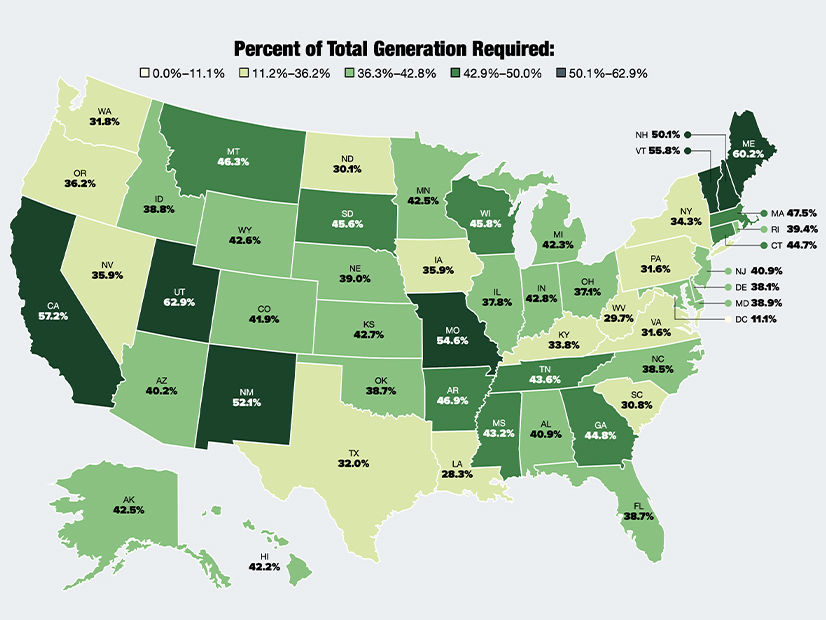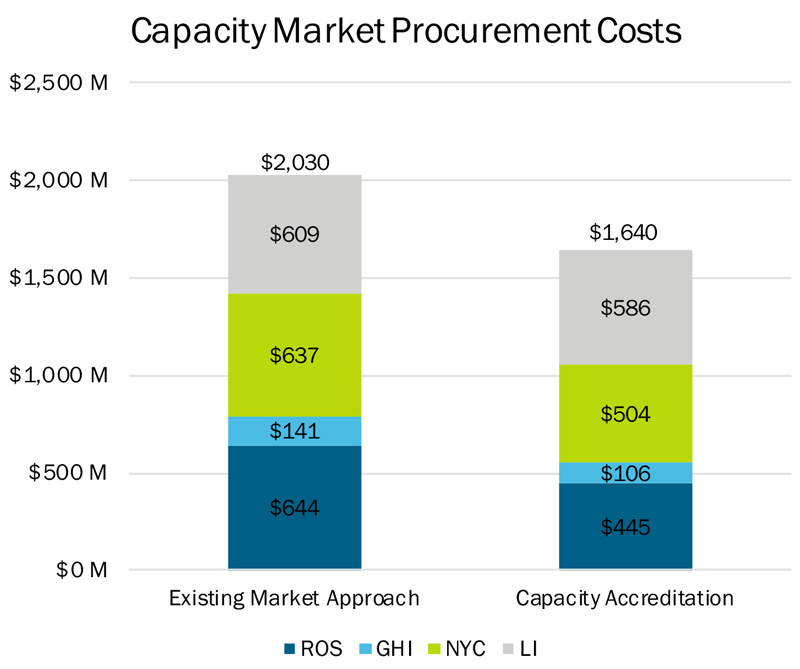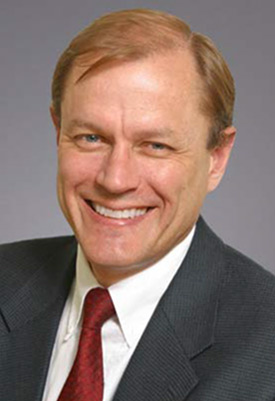A New Jersey bill to boost the use of renewable natural gas (RNG) and promote investment in supporting infrastructure has advanced amid vigorous opposition from environmental groups and strong support from business and union interests.
The state Assembly Telecommunications and Utilities Committee backed the bill (A577) Monday on an 8-0 vote, after more than an hour of testimony, sending it to be considered by a second committee before possible consideration by the full Assembly. The bill has not moved out of committee in the Senate.
The bill directs the New Jersey Board of Public Utilities (BPU) to establish an RNG program in which utilities would procure the gas and invest in associated infrastructure.
A577 also would require the BPU to create a ratemaking structure to allow utilities to recover their investment and the operating costs incurred in providing the gas to consumers, and the costs of procuring it from a third party.
“A charge assessed to customers for the supply of renewable natural gas shall be regulated by the board and shall be based on the cost to the gas public utility of providing that supply,” the bill states.
The bill’s advance comes as the state otherwise seeks to minimize use of natural gas, with vigorous solar and offshore wind programs and an emphasis on electrification. The state masterplan calls on end-use consumption to be “largely decarbonized and electrified” by 2050.
RNG is biogas that has been upgraded for use in place of fossil natural gas, according to the EPA. The biogas used to produce RNG comes from a variety of sources, including municipal solid waste landfills, digesters at water resource recovery facilities and livestock farms.
‘Win-win’ or ‘Dirty’ Bill?
Supporters of the RNG bill, among them the New Jersey Chamber of Commerce and New Jersey Business and Industry Association, two of the largest business groups in the state, argued that the bill would create an alternative to electricity as the state seeks to reduce its carbon emissions.
Also supporting the bill were the New Jersey branch of the International Brotherhood of Boilermakers union and the New Jersey Energy Coalition, an advocacy group whose membership includes utilities and unions.
“This bill is a win-win,” said Chris Emigholz, a lobbyist for NJBIA. “It allows us to diversify our energy portfolio, which is always a good thing, doing it in a way that will allow us to get to our carbon reduction goals in a sooner manner.”
By backing RNG, “we’re allowing innovation to happen in our state, we’re creating more jobs, and we’re supporting economic development,” Emigholz said.
Michael Egenton, executive vice president at the New Jersey Chamber, called RNG a “versatile innovative fuel” that “reduces greenhouse gas that would otherwise be emitted from using the same amount of conventional natural gas.
“To effectively address our worldwide complex environmental challenges, we need a diverse portfolio of solutions that can work together,” he said. “Renewable natural gas helps decarbonize energy and combats climate change.”
But opponents said using RNG would be expensive and do little to reduce carbon emissions. It would simply force ratepayers to support investment in gas infrastructure and prolong the use of natural gas, they said.
“This bill would promote, perpetuate and inflate dirty gas in New Jersey,” said Matt Smith, New Jersey State Director of Food and Water Watch, who called it a “dirty-ass rip-off bill.”
“The climate science is quite clear that we need a rapid, planned, fair and an equitable transition off of polluting fossil fuel infrastructure and on to truly clean renewable sources,” he said. “This bill would take us in the opposite direction, specifically [it] will perpetuate and inflate dirty gas and more dirty gas infrastructure.”
He said studies have shown that the U.S. can only produce enough biogas and synthetic gas by 2040 to replace about 3%-7% of the country’s 2019 gas use, and so adopting RNG would have a minimal impact on reducing greenhouse gas emissions.
Doug O’Malley, director of Environment New Jersey, said RNG costs up to five times as much as conventional natural gas.
“We’re already seeing a 25% increase for gas prices right now,” he said. “And we now have a bill that would invest, provide subsidies and a cost recovery mechanism for a fossil technology, which will be at least five times as costly.”
In a Dec. 2 letter to the committee expressing concerns about A577, the New Jersey Division of Rate Counsel also noted the outsized cost of RNG compared with natural gas. The letter added that it is “unclear that relying on burning renewable natural gas for heat and cooking is more beneficial to the environment than natural gas.
“Both create emissions on consumption,” the letter said. “Although renewable natural gas may bypass the environmental impact associated with extracting natural gas from the ground, it is not clear how the legislature finds and declares that renewable natural gas is necessarily more beneficial.”
RNG “creates similar emissions to natural gas, costs more and at high rates of consumption could require costly equipment upgrades in the homes and businesses of thousands of consumers,” the letter, signed by Brian O. Lipman, director of the Division of Rate Counsel, said.
Ocean Energy Backed
The bill’s advance came about 10 months after the Senate backed S4133, which would prohibit any state agency from enacting a requirement that makes electricity the “primary means” of heating or providing hot water to commercial or residential buildings in the state.
The bill echoed so-called called “preemption bills” in about 20 states that were designed to prevent electrification requirements being enacted, but it died at the end of the legislative session in January with no action by the Assembly. Media reports have depicted the electrification preemption bills as a campaign waged by the natural gas industry to protect its interests.
Also in the last session, the Assembly Telecommunications and Utilities Committee passed a similar bill to A577, A5655, but it did not advance.
In a separate vote Monday, the committee also backed A4483, which would require the BPU to create a pilot project to study the potential of ocean power, especially wave and tidal energy. The bill requires the agency, within 12 months of the completion of the pilot, to work with the state’s Department of Environmental Protection to evaluate and file a report on the feasibility and benefits of using wave and tidal energy as forms of clean energy in the state.
The report must also include a strategic plan identifying wave and tidal energy generation goals, and a timeline by which they should be met.
Assemblyman Robert Karabinchak (D), one of three sponsors of A577, said as testimony began that RNG would be “obviously, in addition to the renewable energy sources that we are currently doing,” such as wind and solar.
“The most important thing is that all of the people in New Jersey have the ability to have a source of energy for their homes, their businesses,” he said.
Alternatives to Electricity
After the testimony, two Republicans expressed skepticism that the state could build an energy future based solely on electricity. Assemblywoman Beth Sawyer noted that, on a recent trip to see her son in California, she had taken note of multiple advisories to electric vehicle drivers not to charge their vehicles between 4 p.m. and 7 p.m. due to measures intended to prevent blackouts.
“So, if you’re going to ask the residents of New Jersey that they cannot charge their electric cars, which everybody is pushing, and then you’re going to try to electrify their homes — this is something that we have to think about,” she said. “Asking to go to one source of energy is not the answer.”
Assemblyman Christian Barranco, a union electrician who said he had done work for utilities, including PSE&G and Jersey City Power and Light, said that although he favors moving toward electrification of the state there are limits to how much the system can handle.
“Electrification is not a political dilemma,” he said. “Electrification is an engineering dilemma. We do not have the electrical generation capacity to electrify our energy sector. We cannot heat our homes and our public buildings with electric. It’s not feasible, from an engineering standpoint … We’re going to overload our grid in a moment’s notice if we continue to add electrical loads to our system.”




